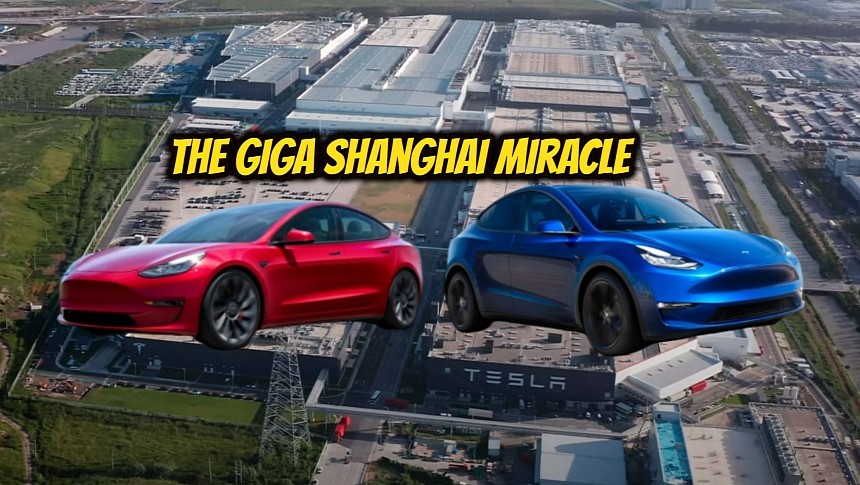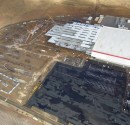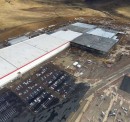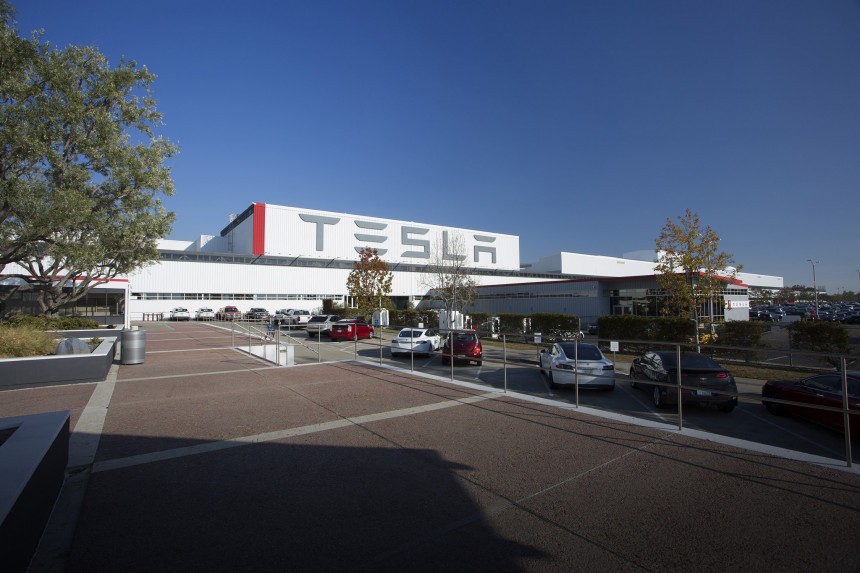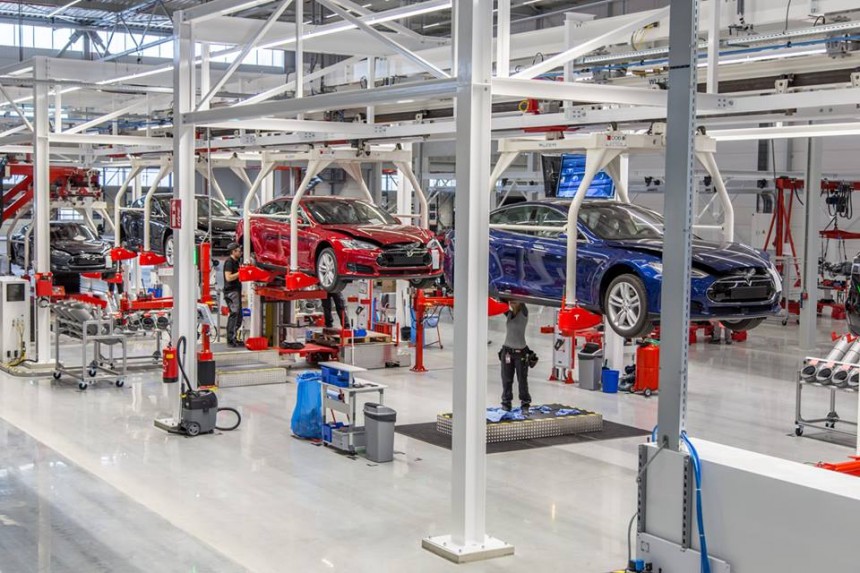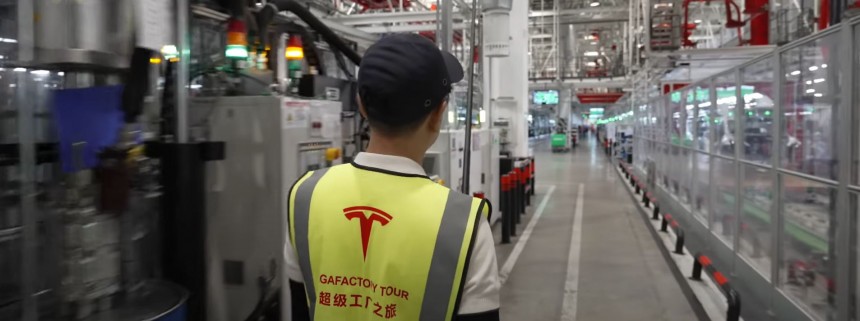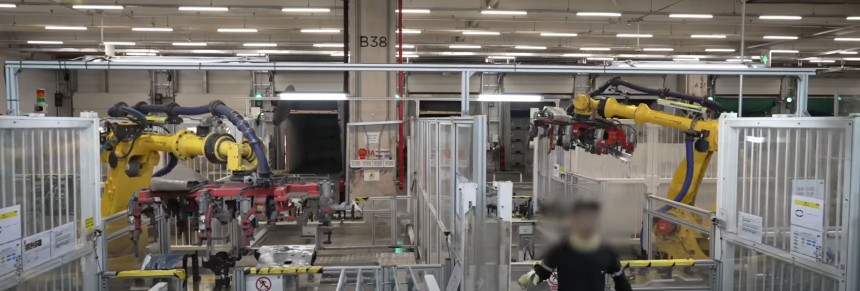Tesla is the most valuable auto company on planet Earth and manufactures the world's best-selling car in 2023 so far – the Model Y. It's also the entity that championed reliable fast-charging and a simpler plug design, two moves that now allow Tesla to pick the fruits of its labor and enjoy the positive outcomes of early investments. It all started with the Fremont factory, formerly owned by Toyota and, indirectly, General Motors because of the NUMMI joint venture. Now, Tesla is a giant. Giga Shanghai shows us why it grew so rapidly.
The stock market is known for being irrational at times. But if investors and speculators aren't right, then consumers must be. After all, they're putting their money where their mouths are.
But if sales data is insufficient to convince you about Tesla's importance, what about a vote of confidence from Ford, General Motors, Mercedes-Benz, Rivian, Volvo, Fisker, and even Honda? These famous auto brands have agreed to switch to the NACS connector and worked out a deal to gain access for their customers to Supercharger stations. At the same time, they created a massive headache for the Dieselgate-born Electrify America.
But all this unbelievable success didn't happen overnight. The automaker needed 17 years to reach profitability. Even the company's outspoken CEO thought at one point that the venture into what once was a conservative business sector would be a total failure.
And to think that all this started in 2003 when Martin Eberhard and Marc Tarpenning founded the company. The brand's story had a turning point in 2010 when it acquired the New United Motor Manufacturing, Inc. (NUMMI) plant in Fremont, California. Toyota and General Motors gave up on their partnership, and, as the saying goes, when two people quarrel, a third rejoices.
The Freemont Factory
But, at that point, it still needed a decade to reach profitability.
And now, two decades after the brand was formally established, Tesla can be credited with forcing the entire auto industry to change.
One of the reasons Tesla succeeded is that it found a way to minimize production costs and sell software to early adopters and people willing to try out new things. Its profit margins are some of the best in the industry.
But for quite some time, the brand was forced to deal with scaling operations and maintaining a satisfactory level of quality. At times, it felt like some shortcuts were taken. Numerous reports showed panel gaps (even on expensive vehicles like the Model X), problematic paint, badly put-together interiors, failing screens, peeling vegan leather, and much more.
Even today, some of these issues are exposed by disgruntled owners online. For many, getting the public's attention is their last attempt at convincing Tesla to fix, replace, or reimburse them for various levels of wrongdoing.
Tesla tried to be a luxury automaker with its Model S and Model X, while true success was hiding in more budget-friendly cars like the Model 3 and Model Y. It also worked hard to figure out how to scale production, but not to the desired level.
However, the best solutions started appearing after expanding manufacturing in China. The Shanghai Gigafactory introduced new ways to maximize productivity and speed up the number of vehicles leaving the factory every day.
Tesla is estimated to be manufacturing 100 vehicles per hour, one every 35 seconds! That's possible thanks to a skilled human workforce, careful production planning, robots, and a strict schedule.
The production of a Model 3 or Model Y in China begins with ensuring the necessary parts are readily available. The person filming praises Tesla for allowing humans to interact more closely with robots and claims other brands, like Hyundai, don't allow the employees to mix with the machines.
The next step is making sure the most important structural parts are ready to be united. The chassis is slowly taking shape with the high-strength steel being welded, while the high-pressure die-casted aluminum parts are slowly making their way onto the production line.
After the body of the car is put together with the help of rivets (because you can't use traditional welding when working with aluminum), the safety elements are added via a special technique known as arc and friction welding.
After the body is painted, it enters the production line, where all the important parts and wiring are added.
They don't waste any time underlining that Americans and Europeans do not show the same level of commitment as Chinese workers. The content creator also claimed that employees are more expensive on the Old Continent, something that is not entirely true.
It's worth noting that, in a way, this influencer is right – Tesla hires fewer people in the US, Mexico, and Germany. But that's not because it wants to keep the employment costs down. The automaker hires exactly how many people it needs to do the job.
Experts and insiders argue that American and European workers are better suited for the automotive jobs they are doing. Moreover, the factories also boast a higher level of automation, one that does not need constant human supervision from nearby. That aspect was put into the spotlight last year when we showed you an almost complete tour of the Gigafactory Berlin.
On top of that, China is facing a major job problem, even though the official statistics do not show it. Industry insiders involved in manufacturing automated machines and who often visit the Asian country say that companies hire around 20 people to oversee their products, while in China, there are generally at least ten times more. They think this is a strategy to decrease unemployment artificially.
On the other hand, Tesla decided to sell EVs imported from China in Canada, and customers have noticed an increase in quality despite being initially worried about it.
But while you read all this, Tesla China made around 11 Ys and 3s.
The final step of the production process is the workers carefully inspecting all the EVs coming from the production line. They make the final adjustments before sending the units to the last stage, where paint imperfections are thoroughly checked.
We will leave it to you to decide if Tesla's right in bringing Chinese-made cars to North America. But only after watching this in-depth tour of the facility.
But if sales data is insufficient to convince you about Tesla's importance, what about a vote of confidence from Ford, General Motors, Mercedes-Benz, Rivian, Volvo, Fisker, and even Honda? These famous auto brands have agreed to switch to the NACS connector and worked out a deal to gain access for their customers to Supercharger stations. At the same time, they created a massive headache for the Dieselgate-born Electrify America.
But all this unbelievable success didn't happen overnight. The automaker needed 17 years to reach profitability. Even the company's outspoken CEO thought at one point that the venture into what once was a conservative business sector would be a total failure.
And to think that all this started in 2003 when Martin Eberhard and Marc Tarpenning founded the company. The brand's story had a turning point in 2010 when it acquired the New United Motor Manufacturing, Inc. (NUMMI) plant in Fremont, California. Toyota and General Motors gave up on their partnership, and, as the saying goes, when two people quarrel, a third rejoices.
Promising start, shaky foundations
The Japanese automaker made a $50 million bet promising to buy Tesla stock in the summer of 2010, and the young EV maker spent $42 million on NUMMI. This vote of confidence followed investments from Daimler and Google co-founders. Thus, Tesla was slowly getting on the right track.But, at that point, it still needed a decade to reach profitability.
And now, two decades after the brand was formally established, Tesla can be credited with forcing the entire auto industry to change.
One of the reasons Tesla succeeded is that it found a way to minimize production costs and sell software to early adopters and people willing to try out new things. Its profit margins are some of the best in the industry.
But for quite some time, the brand was forced to deal with scaling operations and maintaining a satisfactory level of quality. At times, it felt like some shortcuts were taken. Numerous reports showed panel gaps (even on expensive vehicles like the Model X), problematic paint, badly put-together interiors, failing screens, peeling vegan leather, and much more.
Negative publicity is still publicity, but it's not always warranted
It may sound like we're trying to find excuses for Tesla, but scaling globally is a Sisyphean challenge. Tens of thousands of things need to be taken care of. Meanwhile, paying customers expect their cars to be delivered as fast as possible. Thus, some errors are to be expected when you must keep pushing no matter what.Tesla tried to be a luxury automaker with its Model S and Model X, while true success was hiding in more budget-friendly cars like the Model 3 and Model Y. It also worked hard to figure out how to scale production, but not to the desired level.
However, the best solutions started appearing after expanding manufacturing in China. The Shanghai Gigafactory introduced new ways to maximize productivity and speed up the number of vehicles leaving the factory every day.
Tesla is estimated to be manufacturing 100 vehicles per hour, one every 35 seconds! That's possible thanks to a skilled human workforce, careful production planning, robots, and a strict schedule.
The next step is making sure the most important structural parts are ready to be united. The chassis is slowly taking shape with the high-strength steel being welded, while the high-pressure die-casted aluminum parts are slowly making their way onto the production line.
After the body of the car is put together with the help of rivets (because you can't use traditional welding when working with aluminum), the safety elements are added via a special technique known as arc and friction welding.
After the body is painted, it enters the production line, where all the important parts and wiring are added.
A dig at Westerners
Interestingly enough, the individual that brought us this recording also said that the Chinese division is obsessed with quality, and that's why there are so many people working on a single shift.They don't waste any time underlining that Americans and Europeans do not show the same level of commitment as Chinese workers. The content creator also claimed that employees are more expensive on the Old Continent, something that is not entirely true.
Experts and insiders argue that American and European workers are better suited for the automotive jobs they are doing. Moreover, the factories also boast a higher level of automation, one that does not need constant human supervision from nearby. That aspect was put into the spotlight last year when we showed you an almost complete tour of the Gigafactory Berlin.
On top of that, China is facing a major job problem, even though the official statistics do not show it. Industry insiders involved in manufacturing automated machines and who often visit the Asian country say that companies hire around 20 people to oversee their products, while in China, there are generally at least ten times more. They think this is a strategy to decrease unemployment artificially.
On the other hand, Tesla decided to sell EVs imported from China in Canada, and customers have noticed an increase in quality despite being initially worried about it.
But while you read all this, Tesla China made around 11 Ys and 3s.
The final step of the production process is the workers carefully inspecting all the EVs coming from the production line. They make the final adjustments before sending the units to the last stage, where paint imperfections are thoroughly checked.
We will leave it to you to decide if Tesla's right in bringing Chinese-made cars to North America. But only after watching this in-depth tour of the facility.
